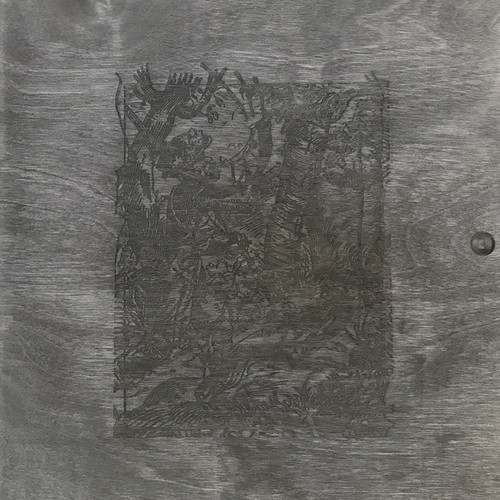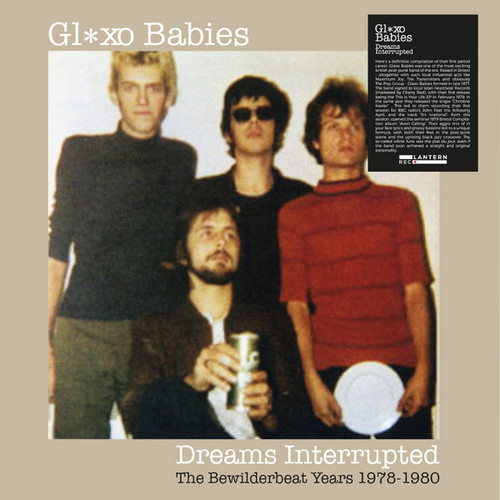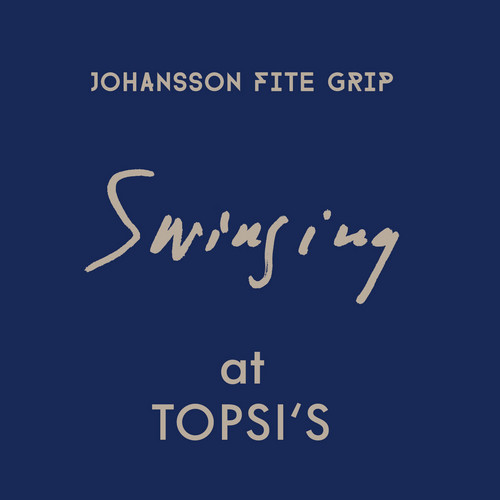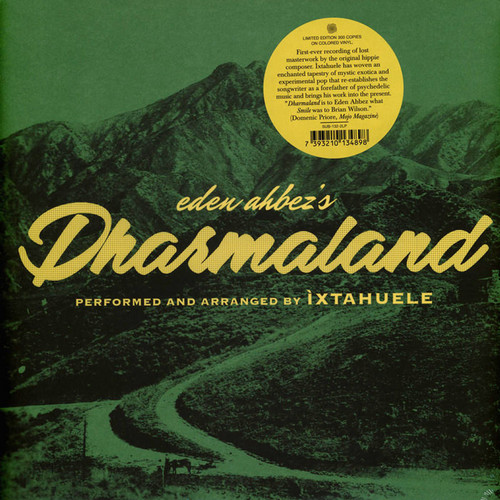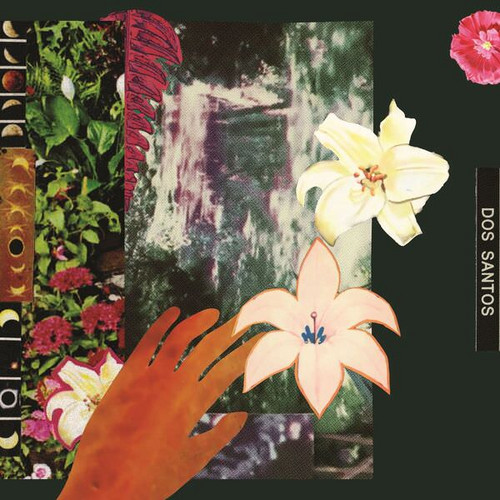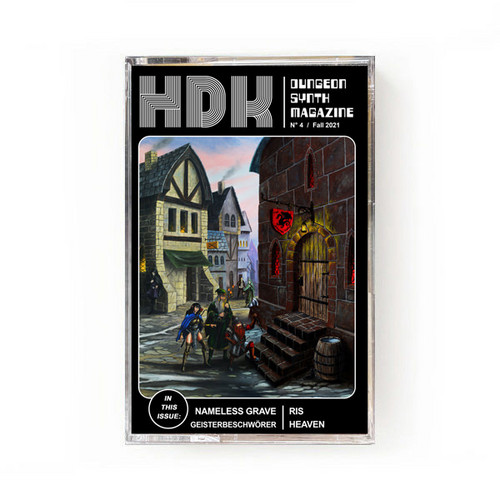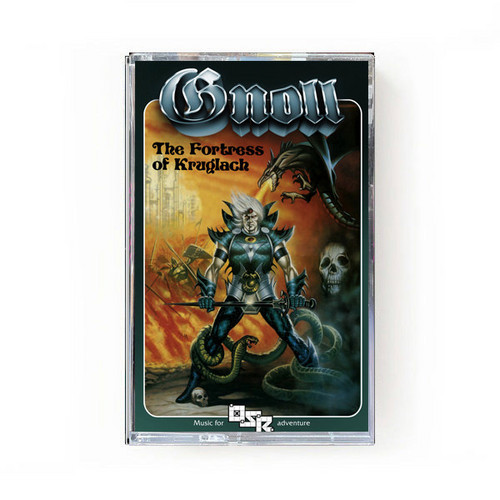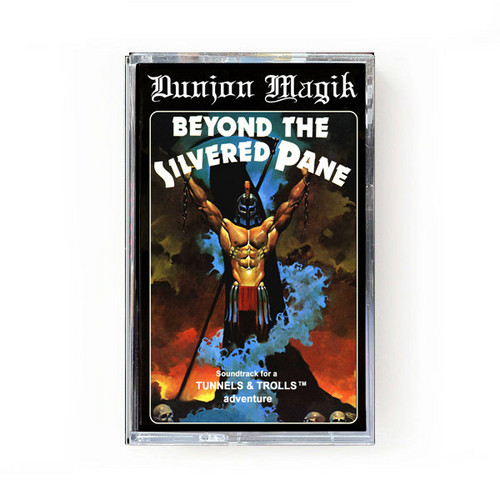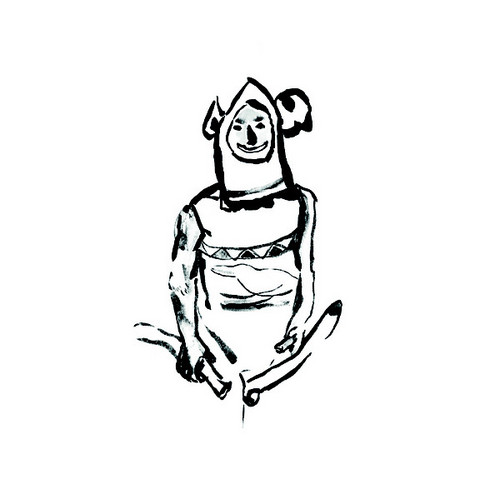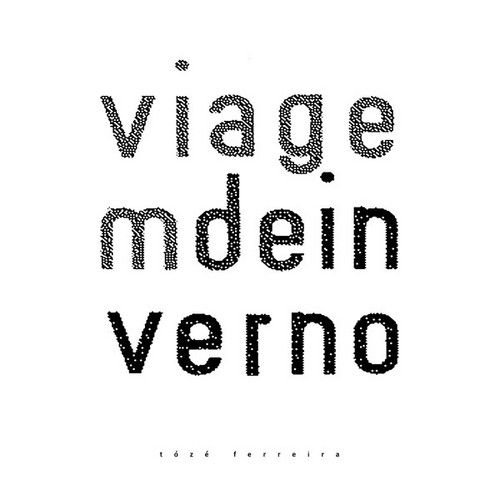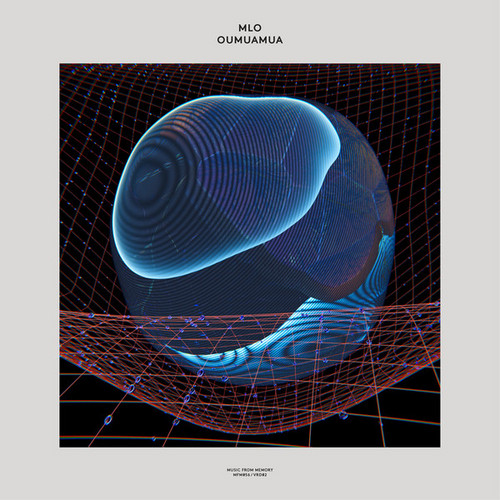New Arrivals
The Crystal Jaw
* Limited Edition of 100 vinyl copies 140gsm stamped and numbered white label Signed by the artist * The Crystal Jaw is a unique, immersive and crystalline sound creation made by Procession Towards the Unknown (Sammy Sayed, Alan Bishop, Sherif Elias, Amir El-Saidi and Ahmad Kubbara) recorded in Cairo in May 2021. The Crystal Jaw is a 30 minutes soundtrack made for Sandrine Pelletier’s eponymous solo exhibition at MCBA (Musée Cantonal des Beaux-Arts de Lausanne) in collaboration with Olivier Duc…
Shade
Liz Harris's 12th album is a heart-melting anthology of songs written over the last 15 years. A mixture of 'Dragging A Dead Deer...' emotional rawness and 'AIA' -style tape-dubbed sonic fog, it's a timely reminder of why she's one of the crucial underground voices of the era. When Harris's early Grouper material began to emerge thru the cracks in the wall of wyrd folk CDRs and hand-made cassette tapes, we could already sense it was something different. There was a bare quality to it that set it…
Companion
* Full Tone Cover Artwork, incl. printed Inner Sleeve * The Lost follows and expands on Otto A Totland's intimate debut solo piano album Pinô from 2014. Once again several days were spent in Nils Frahm's legendary Durton studio to lay down both composed and improvised pieces of quiet beauty. While mostly residing in a small Norwegian coastal town, Otto has been trying to escape the constant movement towards fast paced, polluted lives, where it seems like sounds and impressions never stop. The Lo…
سایه [sāje]
* 300 copies * Oliver Doerell and Jawad Salkhordeh find themselves merging eastern and western sound in an absolutely absorbing record of electronic music dipped in Persian traditions. They create a sound with textures, rhythms, distortions, altered frequencies, voice insertions and blends reality and mysticism into a unique soundscape. The sonorities transpose a nostalgia for a world that never existed, a place where the two musicians find home. Oliver Doerell was born in Brussels, Belgium in …
Of Feathers And Bones
* In process of stocking * KRAAK is proud to present the latest musical outing by one of Rotterdam’s most illustrious pairings in recent history. Marijn Verbiesen (Red Brut) and Michiel Klein (Lewsberg) musically reunite outside of their Sweat Tongue capacity in order to orchestrate a glimmering symphony of dreams-as-sounds in Of Feathers and Bones, their first full-length album as Goldblum. Poetic melodrama courses through these ten tracks, all ripe with an uncanny elegance that evokes the expe…
Nauhoi
* In process of stocking * A new and long-awaited revival of the Fonal/KRAAK siblingry, this time on the occasion of the first LP by that multifaceted sorceress of sounds and visions we’ve known and loved for many a year: the inimitable Heta Bilaletdin!🌧Heta Bilaletdin is an artist working with many mediums: experimental music, moving image and installation. Since early 2010s she has been active in multiple roles in the experimental ug of Helsinki, playing in bands like Olimpia Splendid and Myt…
Per Un Amico
* 500 copies, numbered edition. Remastered edition, Yellow vinyl * This is PFM's brilliant follow-up to Storia di un Minuto, and both albums are considered progressive rock classics, for good reason. The diversity, complexity, and integrity of the music here is as fine as anything produced during the early '70s from other prog rock giants such as Yes, Genesis, and King Crimson. The lyrics are in Italian and, while used sparingly, make a valuable contribution to the session's integrity. The music…
Changez Les Blockeurs
** 99 copies. Deluxe edition in black wooden box with laser engraving on the lid that reproduces an draw and logo on the back. Contains vinyl, with white label, 12-inch 300 gsm white recycled cardboard insert, 12-inch 350 gsm classic gloss ultra-bright sheet with art and credits from cover of standard edition LP, 12-inch 450 gsm cardoard totally handmade and signed by artist, white t-shirt with art from cover of standard edition LP and a pin. ** Within the history of noise music, there are few a…
Dreams Interrupted: The Bewilderbeat Years 1978-1980
Here’s a definitive compilation of their first period career, Glaxo Babies was one of the most exciting british post-punk band of the era. Raised in Bristol – altogether with such local influential acts like Maximum Joy, The Transmitters and obviously The Pop Group – Glaxo Babies formed in late 1977. The band signed to local label Heartbeat Records (marketed by Cherry Red), with their first release being the This Is Your Life EP in February 1979; in the same year they released the single Christi…
Between The Surface And Tomorrow
Three brand new spaced-out transatlantic duo explorations, available in November on 7" vinyl from Astral Editions. A stunning art object of sound and vision. credits released November 12, 2021 Ashley Paul - guitar, voice, bells, clarinet, keyboard - in London Jeffrey Alexander - guitar, wooden saxophone, moog, electric piano - in Philadelphia
Swinging At Topsi's
An evening of free improvisation recorded in Berlin at au Topsi Pohl in 2020 from the Swedish trio of Euro Free Jazz legend Sven-Ake Johansson on drums, Niklas Fite on acoustic guitar and Joel Grip on double bass, performing two extended and dynamic improvisations, and then settling into jazz standard form for "Isn't It Romantic" and "Out of Nowhere" sung by by Johansson. The novelty and warmth of the songs aside, the serious work heard in Sets 1 & 2 of shows the trio in fine form, evolving thei…
Eden Ahbez's Dharmaland
* Digipack cd edition including booklet * Eden Ahbez's Dharmaland, arranged and performed by Ixtahuele, is the first-ever recording of this long-lost masterwork by the original hippie composer. Resurrected from Ahbez’s unrecorded sheet music, c. 1961-63. Ixtahuele has woven an enchanted tapestry of mystic exotica and experimental pop that re- establishes the songwriter as a forefather of psychedelic music and brings his work into the present.
They are joined by a host of guest artists, including…
Sans Chemin
* Multi panels digipack * Murailles Music and Shelter Press release ‘Sans Chemin’, the new album of L’Ocelle Mare. A ritornello that awakens, unfolds, disappears, resurfaces, transforms, forgets itself, awakens again. A ritornello in folds and hollows, which gives us something to see as well as to listen, a theatre of acoustic shadows where each timbre, each rhythm, each modulation, is born from a meticulously re ned gesture. “I don’t write music, it’s an assemblage of gestural memories”, says…
City Of Mirrors
* Limited edition 160-gram *Adobe Dust* color vinyl LP (pressed by Smashed Plastic in Chicago) in a heavyweight matte jacket with IARC obi strip and dome-patterned inner-sleeve * Songs of resistance and gratitude in a Latin pop mode from Chicago’s Dos Santos, one of the longest running groups on International Anthem Recording Company. Vintage-sounding, but polished to modern tastes, ‘City Of Mirrors’ feature the septet playing to their latin heritage in a style that will appeal to all members o…
Hdk Dungeon-synth Magazine # 4
* Limited to 200 copies Pro-dubbed solid yellow cassette + 28 pages booklet * Happy Halloween! With the fourth chapter of this project we experience the classic formula of “scary tales” like in many horror movies of the 80s! Short and terrifying stories, in the best tradition of exploitation. How do you “scare” with music? There are many different approaches: you can work on the timbre of sounds, creating disturbing and alien sound waves that send shivers down your spine. Or weave dark and sinis…
The Fortress Of Kruglach
* Limited Edition to 200 copies This is the soundtrack of the omonymous adventure published in “Proteus” Magazine (U.K.) in year 1986. * In the elder days, beyond the ancient forest of Regnad, the evil Sorcerer Kruglach built for himself a mighty fortress of stone. He retreated into this, to experiment with dark and terrible enchantments, and a fear fell upon the land. The people were afflicted with plague and pestilence; animals and children vanished from their homes at dead of night; and th…
Beyond The Silvered Pane
Your host for this dungeon is that cheerful mercantile dwarf, Marcelanius the Fair. And fair he is, if you are fair with him. Those who try to cheat him find he swings a mean war hammer. After purchasing an old mirror (which proved to be the entrance to many separate planes of existence), he saw a chance to make some money off current dungeon-delving craze and developed his Looking Glass Dungeon (no cracks about Alice in Wonderland)". Thus in 1978 the adventure "Beyond the silvered pane", a mod…
Sirocco: A Compendium Of Experimental Music Made In Portugal Vol.2
As famous as the Northern Wind or Mistral, Sirocco is a Mediterranean wind that blows from the Sahara Desert, and is widely responsible for huge and cinematic sand storms, and also for a strange phenomenon called “blood rain”, due to the red sand that eventually mixes with the falling rain. I’ve also heard that “Life is in the blood“, so let the wind blow! Without any further delay, Wasser Bassin proudly presents: Rafael Toral, Han, Tózé Ferreira, The Beautiful Schizophonic, Discmen, Gala Drop…
Viagem de Inverno
* 100 copies * Wasser Bassin proudly presents, “viagem de inverno“, Tózé Ferreira‘s first vinyl release in more than 30 years! Back in 1988, when the mythical label, Ama Romanta, released Tózé‘s debut “Música De Baixa Fidelidade”, the portuguese musical panorama simply wasn’t ready for contemporary electronic compositions, specially if they were computer programmed pieces, blended with abstract synth layers.
Tózé‘s rare performances were often mocked by the audience, and, usually, ended in …
Oumuamua
Music From Memory are excited to present the first compilation of works by British electronic pioneers MLO aka Peter Smith and Jon Tye. Titled ‘Oumuamua’ and second up in the Virtual Dreams series, the compilation is an in-depth artist focused release containing twelve thoughtfully selected tracks that touch on highlights from the duo’s discography as well as newly (re)discovered music drawn from a vast archive of unreleased pieces, sketches and extended jams recorded between 1993-1995. MLO’s a…
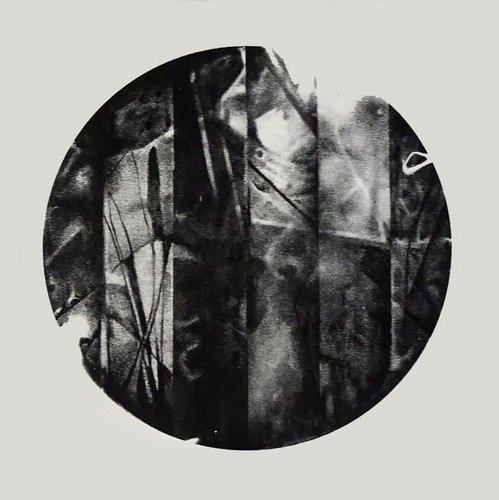
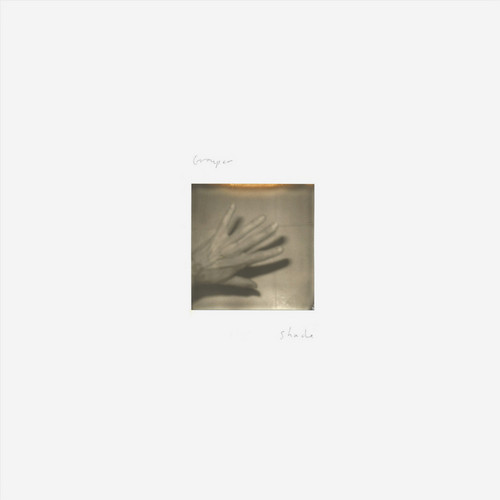
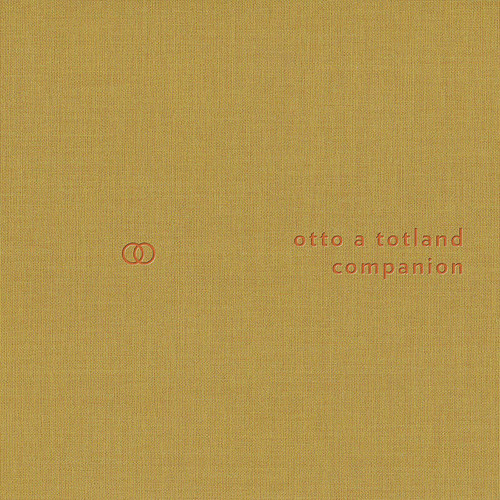
![سایه [sāje]](https://cdn.soundohm.com/data/products/2021-11/Doerell-Salkhordeh-saje-jpg.jpg.500.jpg)



